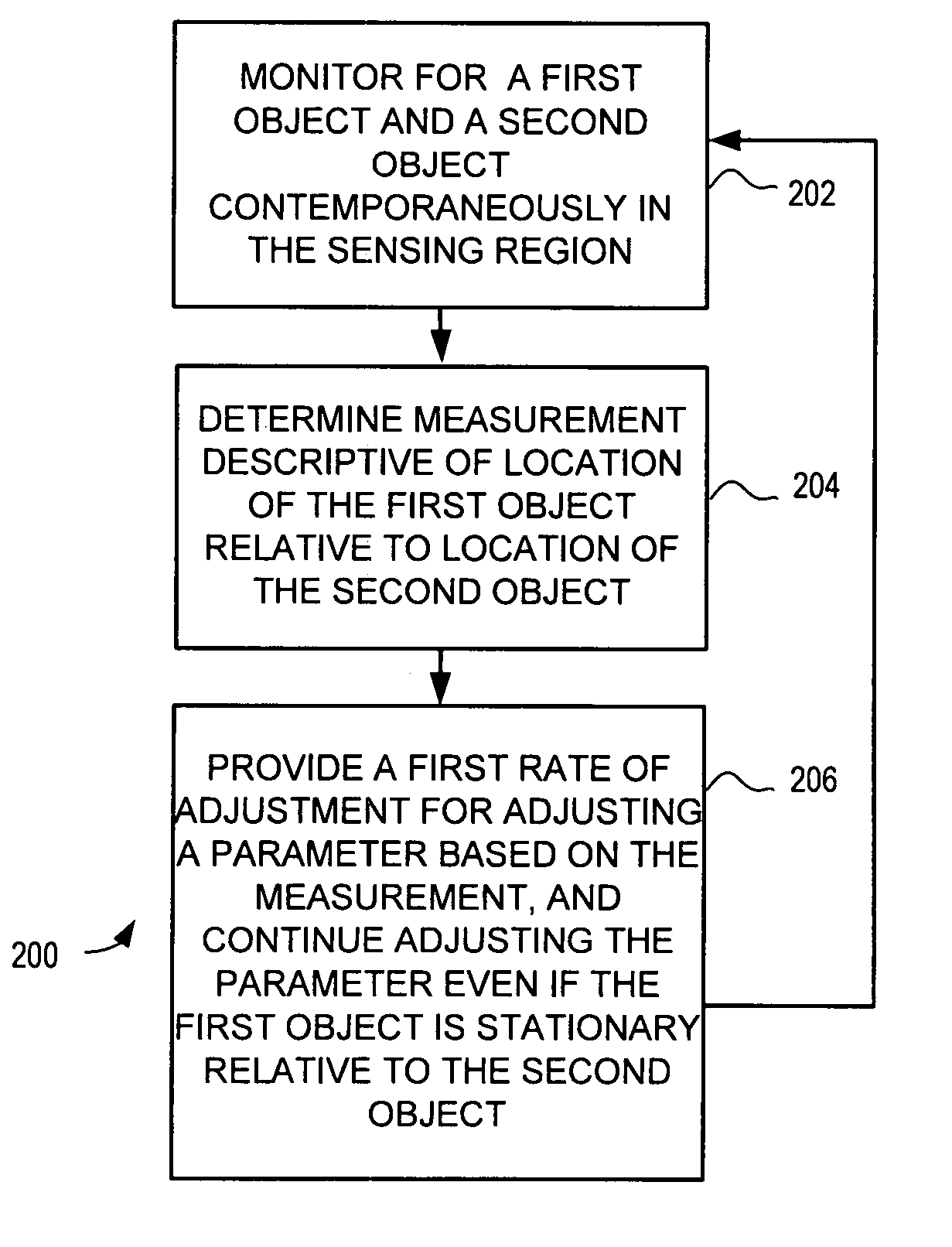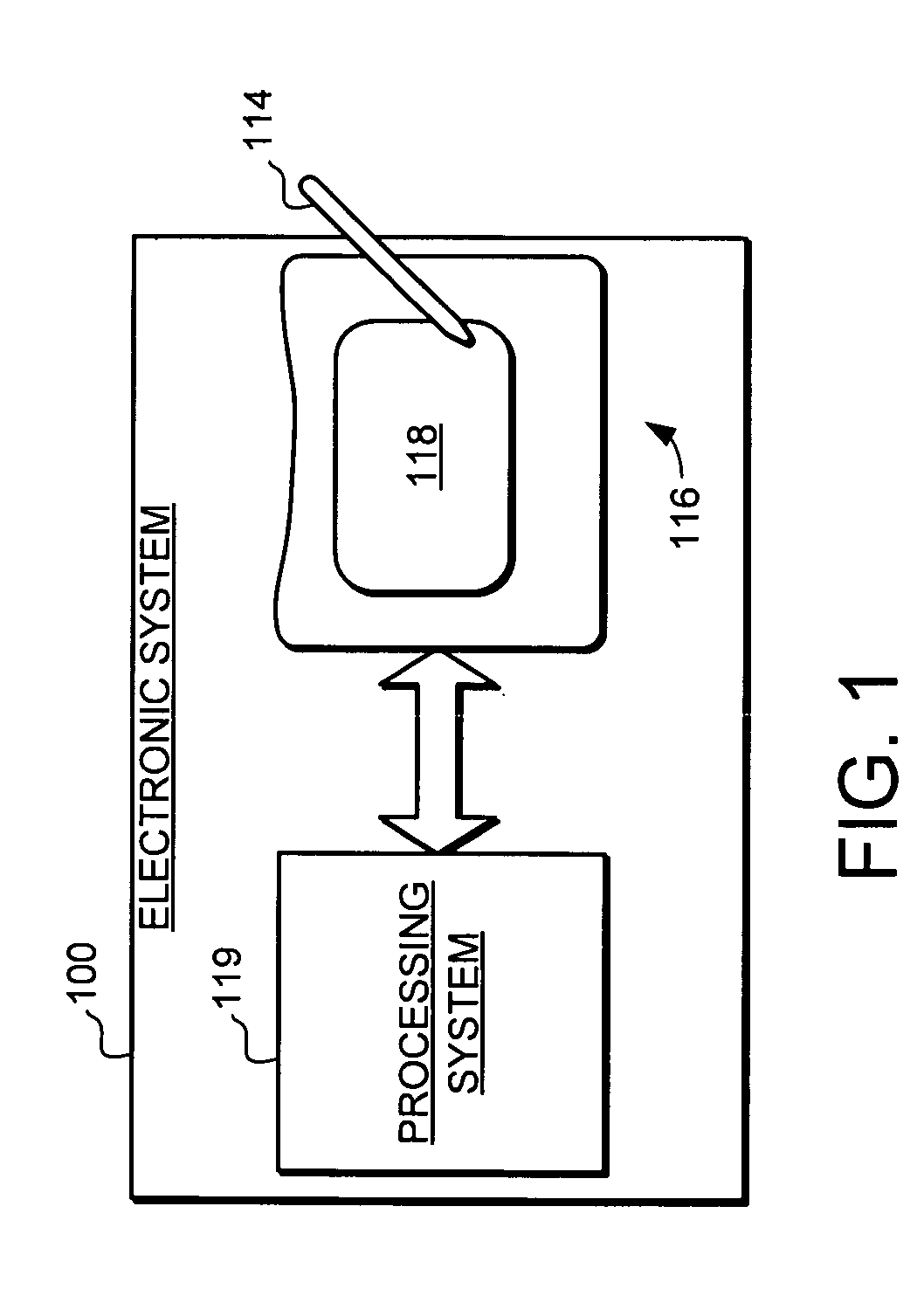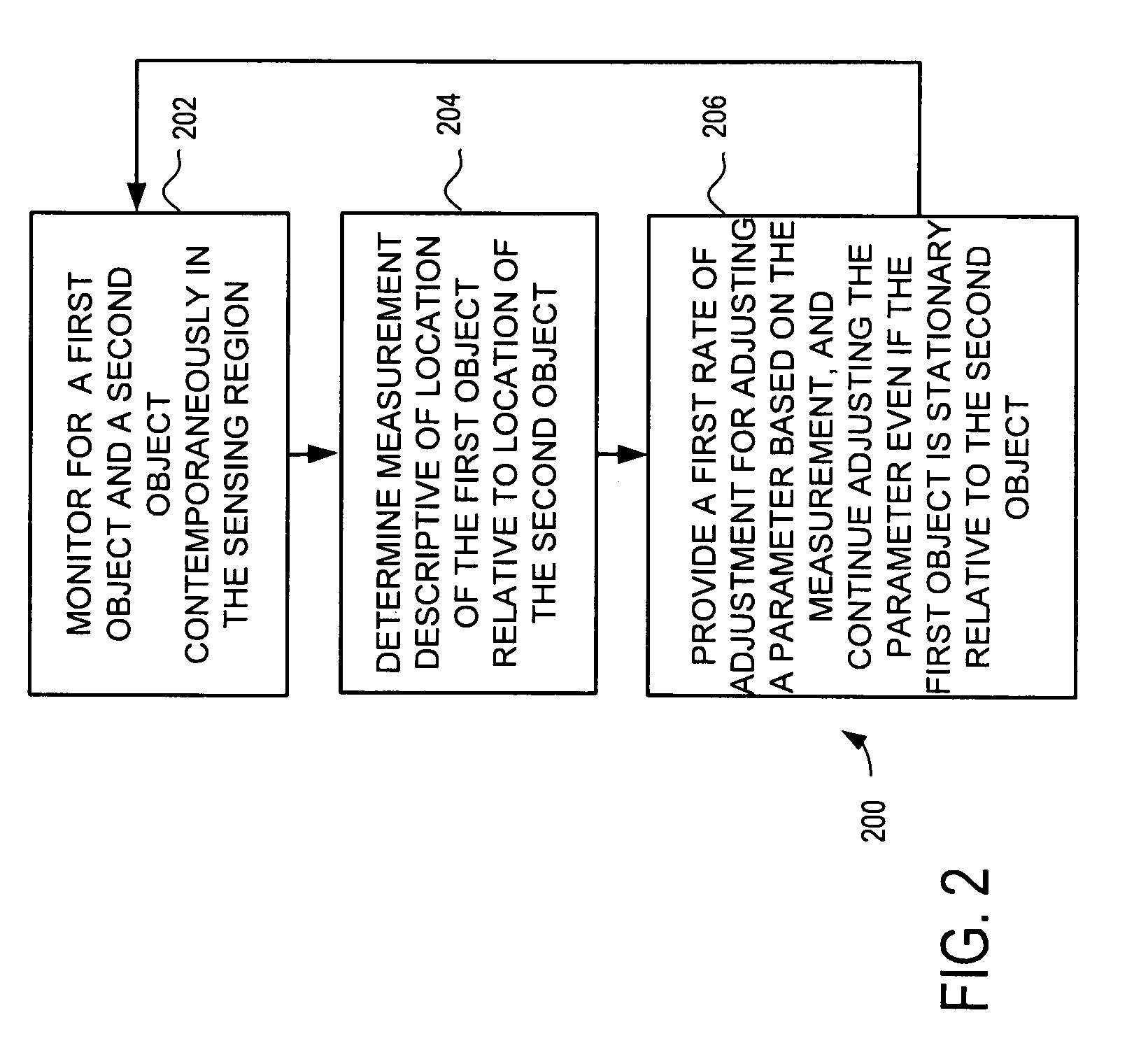Method and apparatus for extended adjustment based on relative positioning of multiple objects contemporaneously in a sensing region
a technology of relative positioning and sensing region, applied in the field of electronic systems, can solve the problems of difficult traditional methods of adjustment used for proximity sensors, especially difficult, etc., and achieve the effects of facilitating extended parameter adjustment, improving user interface functionality, and improving device usability
- Summary
- Abstract
- Description
- Claims
- Application Information
AI Technical Summary
Benefits of technology
Problems solved by technology
Method used
Image
Examples
Embodiment Construction
[0015]The following detailed description is merely exemplary in nature and is not intended to limit the invention or the application and uses of the invention. Furthermore, there is no intention to be bound by any expressed or implied theory presented in the preceding technical field, background, brief summary or the following detailed description.
[0016]The embodiments of the present invention provide a device and method that facilitates improved device usability. Specifically, the device and method provide improved user interface functionality by facilitating extended parameter adjustment using proximity sensors. Turning now to the drawing figures, FIG. 1 is a block diagram of an exemplary electronic system 100 that is coupled to a sensor 116. As will be discussed in greater detail below, the sensor 116 is part of a proximity sensor device that can be implemented to support a user interface for the electronic system 100.
[0017]The term “electronic system” as used in this application...
PUM
 Login to View More
Login to View More Abstract
Description
Claims
Application Information
 Login to View More
Login to View More - R&D
- Intellectual Property
- Life Sciences
- Materials
- Tech Scout
- Unparalleled Data Quality
- Higher Quality Content
- 60% Fewer Hallucinations
Browse by: Latest US Patents, China's latest patents, Technical Efficacy Thesaurus, Application Domain, Technology Topic, Popular Technical Reports.
© 2025 PatSnap. All rights reserved.Legal|Privacy policy|Modern Slavery Act Transparency Statement|Sitemap|About US| Contact US: help@patsnap.com



